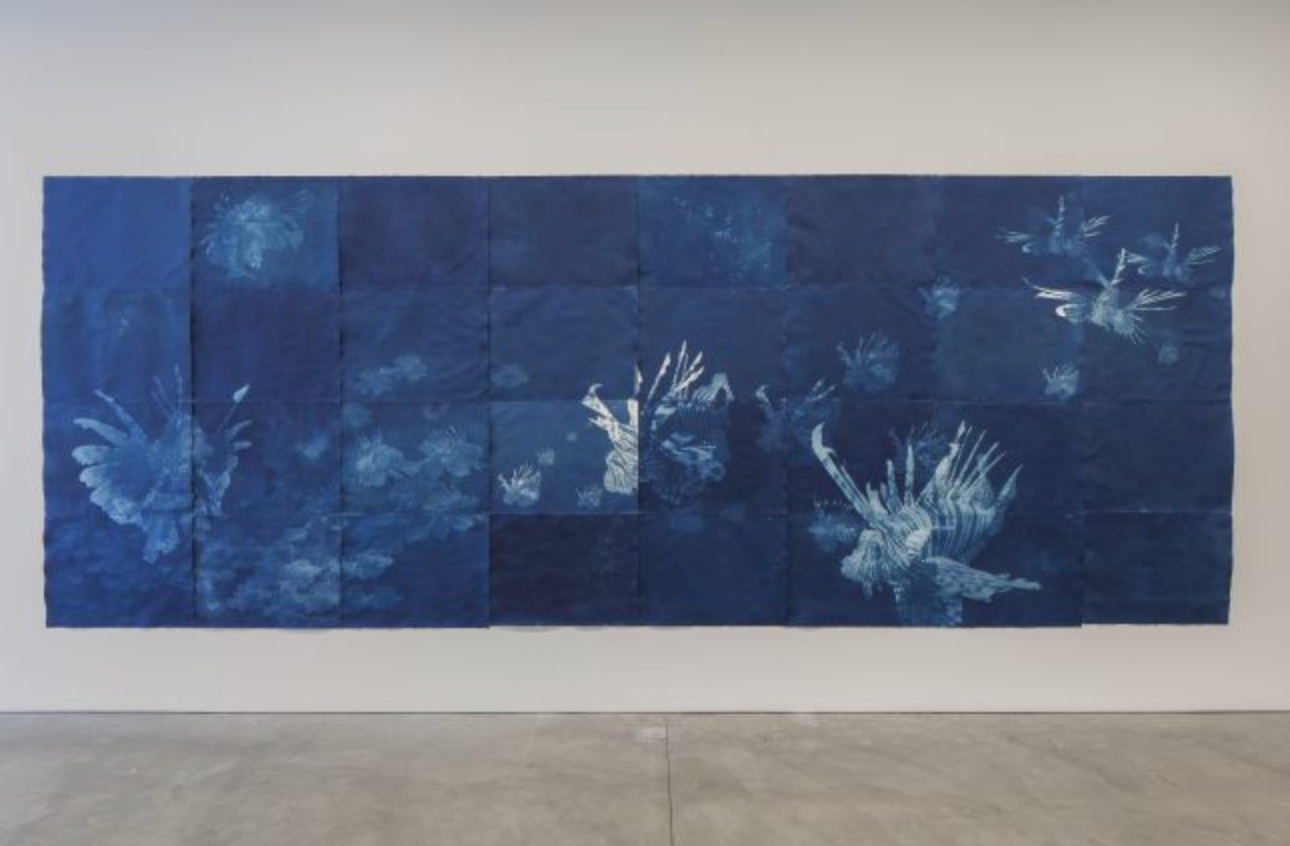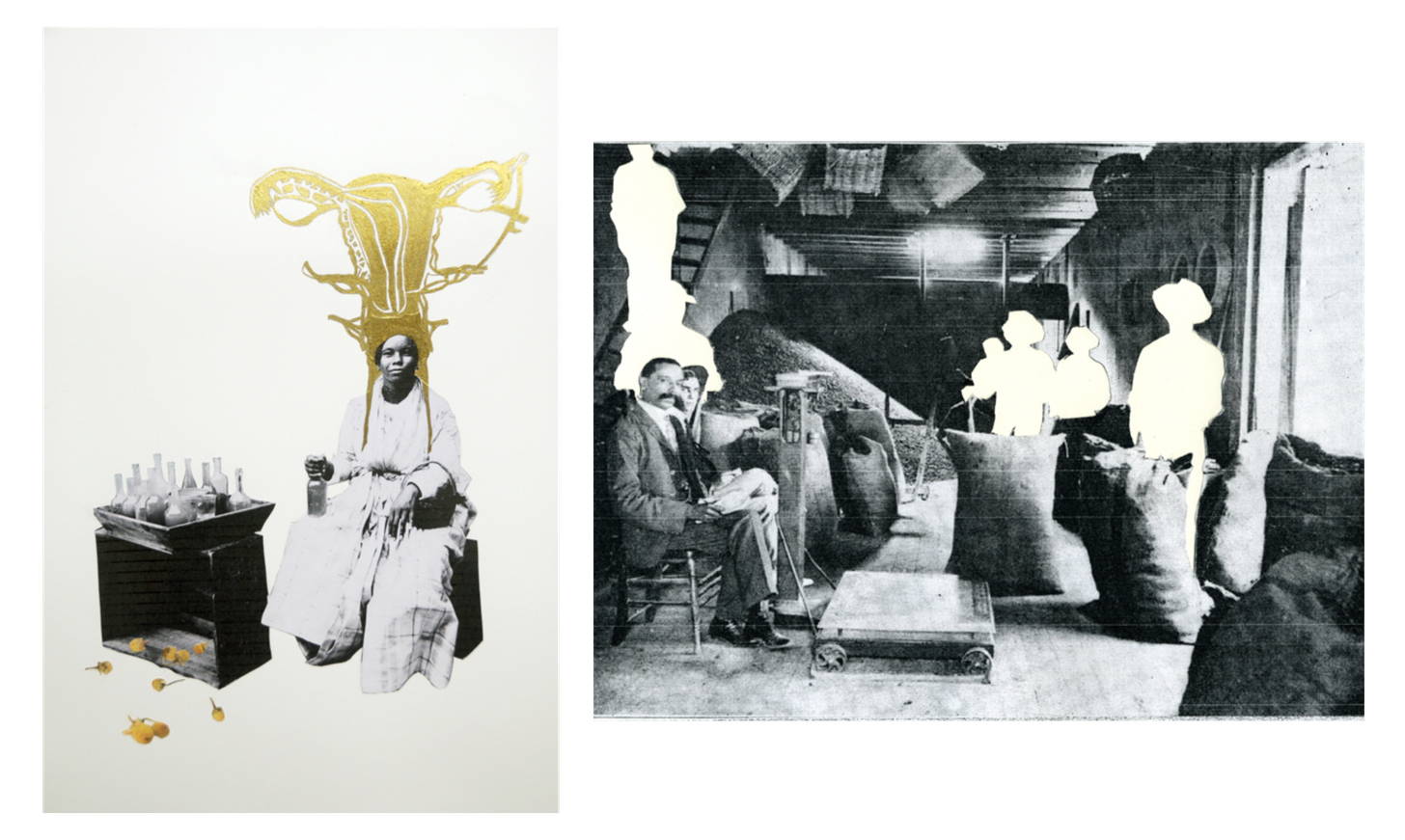Dear Johnny Adimando
Estimated reading time: 4 minutes, 7 seconds. Contains 824 words -------------------------------------------------------------------------------- Long time no see


Estimated reading time: 4 minutes, 13 seconds. Contains 844 words
Note: this particular essay mentions the uterine reproductive system in relation to woman-identifying individuals and from a ‘female’ perspective, as seen in Jamaican culture and families. These notes are reflective of the artists’ research and personal history, and are in no way reflective of uterine reproductive systems being synonymous with womanhood as the default overall.
Dear Andrea,
I cannot thank you enough for the impact your work has left on me. Thank you for shaking up the gallery space with your pieces that are the perfect marriage between beautiful and confrontational. That’s a personal favorite blend of mine.
About four years ago in 2017, during a personal trip to San Diego, I was taking a day trip to the MCASD downtown. It was here that I experienced Andrea Chung’s work for the first time. I remember standing in the galleries for her exhibition You Broke The Ocean In Half To Be Here, and just being completely transfixed. Her pieces floated between melancholy and ethereal. My god, her large-scale cyanotypes completely engulfed the viewer into her hand-crafted ocean. Her collages and cut paper work had a way to mimic echoes of people that occupied the spaces. The vibrant confrontation of the sensationalized, exotified Jamaica advertisement flyers had a way of making your skin crawl in a wave. Her body of work is sure to leave an imprint on the mind, because for me, it absolutely goddamn did.

Chung is a San Diego-based artist who has a vibrant exhibition record that includes the Jamaican Biennale, the Chinese American Museum, the California African American Museum, and the San Diego Art Institute. Much of her work spans mediums that include cyanotype, collage, multi-media installation, and essays, which explore the history of colonialism and slavery in the Caribbean. (1) Her process has evolved from painting into utilizing materials that carry its own sense of history and context in relation to the overall concept of the work.
“I am interested in material culture and the history of mundane objects we often take for granted. Sugar, for example, is in everything we eat and has a complicated history. Empires were built on sugar and developing countries are still struggling because of it. With all my work, I take the simplest material and tease out its story, examining the land and lives it has impacted. And I try to honor the labor of others with my own artistic labor.” mcasd.org/artist-qa-andreachung
You Broke the Ocean in Half to Be Here was Chung’s first solo exhibition. This particular exhibition was a full expression of her research into the Caribbean’s legacy of slavery and colonialism, a confrontation of modern-day tourism as a capitalist attempt at putting a glossy cover over the history, and these subjects’ relationship to her chosen materials (2). The engulfing cyanotypes stem from Chung’s interest in the “early photographic histories of Jamaica”(3). Also included among the cyanotype work was her various collage pieces, specifically the May Day series and Crowning series.
“In Chung’s May Day series of cutouts, the bodies of laborers are removed from their worksites—and thus given a day off. A recent collage series, Crowning, explores the practices of black midwives in the Southern United States and in the Caribbean. Each midwife wears a crown resembling a golden uterus, an emblem of female knowledge passed down through generations.” mcasd.org/exhibitions

Personally, what is particularly captivating about Chung’s work is that it causes one to think. Standing in the galleries, largely by myself with this work, I remember having the quiet thought to myself of ‘I truly never properly considered this perspective before.’ It sounds like such a ‘duh’ statement, but It’s unfortunately not and everyday occurrence that you’re confronted with such a visual representation of colonialism that we’ve benefitted from (and boy, could you unpack the privilege that comes with that). Add that with the vibrancy that Chung utilizes her media to catch the curious eyes, and it’s impossible to look away once the visuals have you within their grasp. I find her pieces from the perspective of aesthetics to be incredibly bold. Her use of gold on the Crowning pieces, the high contrast of the black and white imagery with the stark white cut-outs, it all creates compositions that are genuinely wonderful to look at! Of course, aesthetics are only an added feature compared with the over-arching theme of the works.
We’re living through a time period where there’s a steep rise in awareness of both the history of colonialism and the colonialism that operates with little consequence in the present day. Work like Chung’s is important (and dare I say vital) in order to tell these stories and educate those who interact with it. There’s an opportunity with exhibitions like this for viewers to sit and meditate on the concepts bring presented, an opportunity to see things with a sense of humanity. There’s no better time for that then the present.
- Sasha
instagram.com/andreachungstudio
2. Asian Diasporic Visual Cultures and the Americas, Issue 5 (2019), pg. 219
3. https://www.mcasd.org/exhibitions/andrea-chung-you-broke-ocean-half-be-here